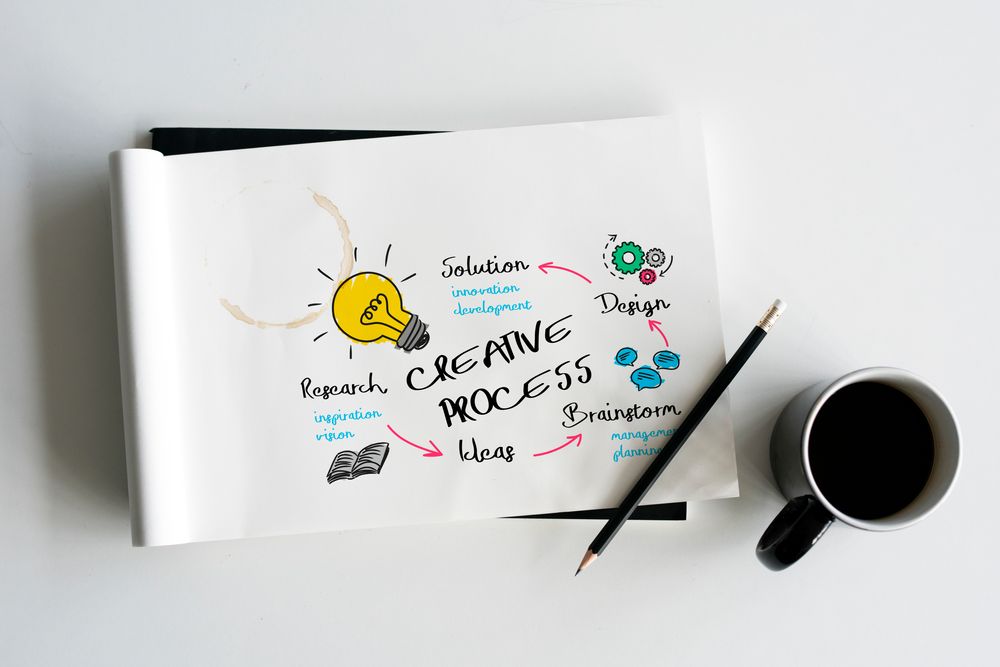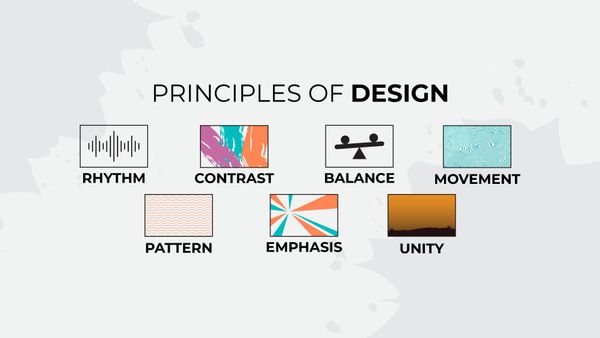Principles of Design You Need to Master
Yes! Graphic designing is all about creativity, beauty, and innovative concepts. It's not defined and fixed to measured understanding; this chaos of creativity needs discipline and pattern to figure out the equations that work. The principles of design are these tried and tested equations that work like marked footsteps for budding graphic designers to create beautiful designs. Because design must make sense, graphic design does not rely solely on its visual elements to fully represent information.
It also depends on the relationship of these elements: with each other, with their context, and with their audience. Design principles define these relationships and describe what happens when elements work well together to convey a particular message. Principles can include ideas such as contrast, emphasis, layers, timing and movement, harmony and balance, proximity and proportion, repetition, and transparency.
What are the Basic Principles of Design?
There are twelve basic principles of design: contrast, hierarchy, balance, emphasis, rhythm, unity, pattern, proportion, movement, repetition, variety and white space. These principles work together to create visual and functional designs that meaningful to users.
1. Contrast
The contrast principle of design is based on the distinct difference between two or more elements in the design so they stand apart from each other. Maintaining the contrast helps to create visual hierarchies in the design.
2. Hierarchy
A graphic design hierarchy uses several key principles such as size, color, contrast, placement, repetition, and brightness to emphasize specific characteristics of a design. Control these factors to show the importance of the overall design. Hierarchy is usually created by the contrast between visual elements in a composition. Visual elements with the highest contrast are usually perceived first. Hierarchy allows you to control how your audience interacts with information so that it is navigated and processed as intended.
3. Balance
Symmetry and balance help align the design elements equally and maintain the visual weight of the design. The balance principle of design is important as the lack of balance makes designs look disproportionate.
4. Emphasis
The emphasis principle of design can be understood with the predetermined dominance of a specific element in the complete design. The emphasis can be created by weight, position, color, size, shape, and style.
5. Rhythm
The rhythm principle of design is driven by the spacing between different design elements, creating a regular or irregular visual sense. Regular rhythms are known to create calmness, whereas irregular rhythms create excitement.
6. Unity
The unity principle of design is focused on the harmony of various elements in the design. The designer needs to maintain the homogeneity of the design elements to make them look like relevant pieces to each other.
7. Pattern
As the name suggests, the pattern design of elements focuses on creating set standards of repetition in design to create a visual experience. The seamless patterns are usually seen in interior design. Ex. the tiles fitted together, wallpaper. The repetition of elements sets the tone of the design.
8. Proportion
The proportion principle of design designates the size of elements with respect to each other. A proportionate design creates a visual symmetry and adds much-needed appeal, and that's why it appears catchy to our eyes.
9. Movement
The movement principle of design directs how a viewer's eyes travel over a design. It should follow a hierarchy to lead the viewer's eyes from the most important element to the least important one.
10. Repetition
The repetition principle of design is based on the recurrence of design elements to fit and create a specific pattern or texture. It creates a continuity flow and helps build a sensory-driven visual experience.
11. Variety
The variety principle of design is based on engaging viewers and keeping their interest in design elevated with diverse elements that create a sense of contrast and uniqueness. Adding new elements for variety helps to change the monotony of the design and makes it more appealing.
12. White space
All other design principles relate to what you add to your design. Whitespace is the only space that specifically addresses what you don't add. Whitespace is exactly that: blank page around elements in your layout. For new designers, this can be a dangerous area. Often, just giving a composition more space to breathe can turn it from ordinariness to success.
White space doesn't just sit there doing nothing, it creates hierarchy and organization. Our brains naturally associate a large white space around an item of importance and luxury. This tells us that objects in one region are grouped separately from objects elsewhere.
Even more interestingly, it can convey a completely different image or idea from your main design to reward your audience for engaging. The logo above uses active negative space to convey some ideas in a fun and creative design.
13. Harmony
The harmony principle of design dictates the sense of cohesiveness among the different elements of a design. In a harmonical design, the elements are neither the same nor completely different from each other; rather, they seem related.
14. Scale
The scale principle of design is aimed at standardizing the measurement to proper sizing. The scale helps designers to engage viewers to a focal point and help them make sense of imagery and its core aspects.
15. Grids
Grids are another powerful tool for designers working with a layout. Grids add structure to the page, which can help designers place and size individual elements. By helping designers create precise patterns and shapes, they can also streamline the design process and ensure consistency across multiple pages.
A basic grid has standing and flat lines. Typographic grids have rows and columns, margins and grooves.
Web and digital media grids are more standardized than many others, largely because these design layouts need to work on desktop as well as mobile devices.
Conclusion
Combining your unique design style with these fundamental principles of design will help set apart your work and offer a competitive edge. We at ProAlley offer a broad spectrum of online graphic design courses to help you master designing. We will work with you to put these principles of design to put to practice and create cool visual graphics.
Also Read: 5 Important Graphic Designing Interview Questions with Answers
Top Courses:
Game Design Certification | Online Graphic Design Courses With Certificates | Online Animation Courses with Certificates | Learn VFX Online | Premiere Pro And After Effects Course | Photoshop And Illustrator Course | Graphic Design Full Course | Adobe Illustrator Certification Course | Learn corelDRAW Online | Adobe XD Course in Hindi | CorelDRAW Course In Hindi | Image Processing Course Online | Photoshop Course Online In Hindi | Adobe XD Online Course | Indesign Online Course | Nuke Online Course | Adobe Premiere Pro Course | Premiere Pro Online Course | Motion Graphics In Hindi | Online Color Grading Course | Maya Animation Course Online | 3Ds Max Online Course | Maya Modeling Course | ZBrush Certification Course | Game Environment Design Course | After Effects in Hindi | Adobe Illustrator Course Hindi




